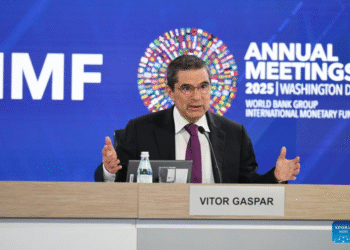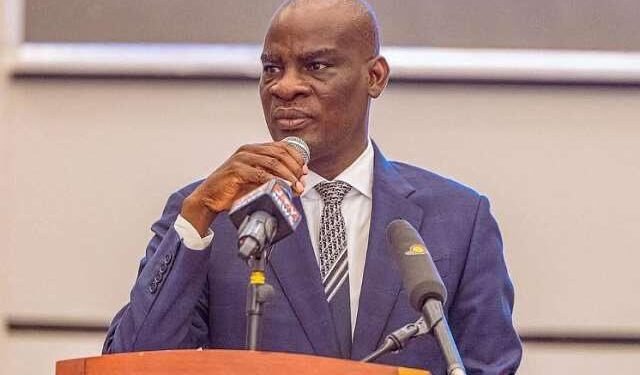An Economist, Dr. Said Boakye of the Institute of Fiscal Studies has warned that Ghana is in serious trouble because it uses a chunk of its revenues to service its debts. According to him, this makes it very difficult for the government to undertake its developmental projects.
As a result, he urges the government to consider the percentage of its revenues that go into debt servicing before it decides to borrow. This, according to him, is the “ultimate measure of debt burden”.
“Ghana’s interest payment as a share of its revenue is very high. In 2018, Ghana’s debt to GDP ratio was about 57% but government was using 33.2% of its revenue to pay interest on the debt. It increased to 37% in 2019 and increased to 44% in 2020. And in 2021, it has been projected to be 49.5%. That is about half of your revenue used to service debt. Japan whose debt to GDP ratio was more than 200%, was using only 11% of its revenues to pay interest on debt.
“So, clearly, Ghana is in trouble more than Japan whose debt to GDP ratio is more than 200%; more than US whose ratio is about 105%”.
Dr. Boakye raised this alarm in an interview with The Vaultz News whilst discussing the country’s rising debt situation. Recent Bank of Ghana’s Economic and Financial Data show that the country’s debt rose to GH¢304.6 billion at the end of March 2021, up from GH¢291.6 billion at End- December 2020. Despite the increase in the debt stock, its percentage to GDP has reduced to 70.2% in March 2021 from 76.1% at End-December 2020.
Debt-to-GDP ratio, an intermediate measure
Despite crossing the sustainability threshold of 70%, Dr. Boakye noted that this is not the ultimate measure of the country’s debt burden. He, however, expressed worry about what he described as too much emphasis on the debt-to-GDP ratio.
“People are too much fixated on debt-to-GDP ratio. Yes, it is a number you can talk about. But, it’s an intermediate measure. So, if you say 70% is the threshold and Ghana has exceeded it, what about Japan? The true measure of the debt burden is how much of your revenue you are using to service the debt.
“You have a debt of GH¢304.6 billion, what does it mean? You use that nominal number and your GDP to say that is your debt burden. But, debt-to-GDP ratio is not the ultimate; I call it, intermediate measure. The ultimate measure of debt burden is the debt service”.
Justification for declining debt-to-GDP ratio
Meanwhile, the recent data show that nominal debt stock has gone up but its percentage to GDP has reduced. What might be the reason behind this seeming contradiction? Dr. Boakye believes this is due to disparities in the data used to compute the ratio.
“At the end of December 2020, even though the debt was GH¢291.6 billion, the GDP they used to compute the debt-to-GDP ratio was the projected one. At that time, the statistical service had not come out with the actual 2020 GDP figures”.
Dr. Boakye further explained that the actual figures from the GSS turned out to be far higher than the projected. According to him, the actual figure was about GH¢21 billion more than the projected GDP figure for 2020.
“The projected GDP was lower than the actual. Because of that, the denominator has increased and the debt to GDP ratio has come down. Since it’s the Statistical service that computes the GDP, we have to use theirs, not the Ministry of Finance”.
Inconsistencies in GDP figures
Meanwhile, Dr. Boakye expressed concern about certain inconsistencies in the recent GSS GDP figures. As a result, he argued that the GSS might have used a deflator that is too high.
“But to me, it is a little difficult to understand. Because the implied GDP was having an implied growth rate of about 0.9%. But the new GDP that they released, the growth rate has rather gone down to 0.4%. if the real increase has marginally gone down, why is it that the nominal GDP has gone up so drastically?
“It means the GDP deflator, which is reflecting inflation rate, has gone up so much; I’m curious as to what is going on. It means the implicit deflator they have used is too high. Because we haven’t seen inflation to be so high. Unless, the Ghana Statistical Service has used other information that I do not know”.
READ ALSO: Elevate DOVVSU to a Directorate – Dr. Dwamena-Aboagye






















